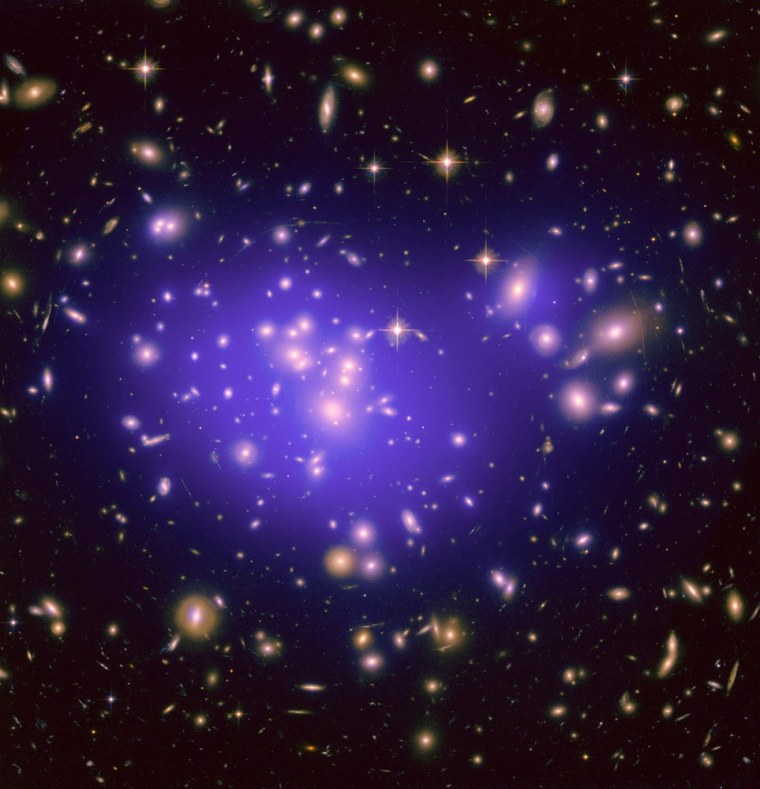By peering at the distant reaches of the universe through a galactic magnifying lens, astronomers may have found a way to better understand mysterious dark energy, which is thought to be speeding up the expansion of the cosmos.
Though scientists don't know what dark energy is — nor have they proven definitively that it exists — they think it is the force causing galaxies to stray away from each other at an ever-quickening pace. Dark energy is the name given to whatever stuff is permeating the universe and causing this surprising accelerated expansion.
In the new study, astronomers used a massive galaxy cluster called Abell 1689 as a giant cosmic lens to study how mass warps space and time around it. When light from even more distant galaxies passes near the cluster on its way to our telescopes on Earth, the light appears magnified and distorted because of this effect.
The researchers examined 34 pictures of these far-away galaxies, taken by the Hubble Space Telescope and ground-based observatories, to study the geometry of space-time. This property is thought to be influenced by dark energy, which makes up about 72 percent of all the mass and energy in the universe, scientists think.
"The geometry, the content and the fate of the universe are all intricately linked," said researcher Priyamvada Natarajan of Yale University in a statement. "If you know two, you can deduce the third. We already have a pretty good knowledge of the universe's mass-energy content, so if we can get a handle on its geometry then we will be able to work out exactly what the fate of the universe will be."
The researchers combined their measurements of the bent light — a phenomenon known as gravitational lensing — with previous calculations of the universe's geometry based on observing supernovas, galaxy clusters and other heavenly objects. Together, these clues helped narrow down estimates of dark energy's properties.
"Using our unique method in conjunction with others, we were able to come up with results that were far more precise than any achieved before," said co-researcher Jean-Paul Kneib of the Laboratoire d'Astrophysique de Marseille in France.
Ultimately, the researchers were able to refine estimates for dark energy's so-called equation-of-state parameter, called w, which relates to how dark energy shapes the universe. They were able to reduce the uncertainty in this value by about 30 percent.
The new findings are detailed in a paper published in the August 20 issue of the journal Science.
